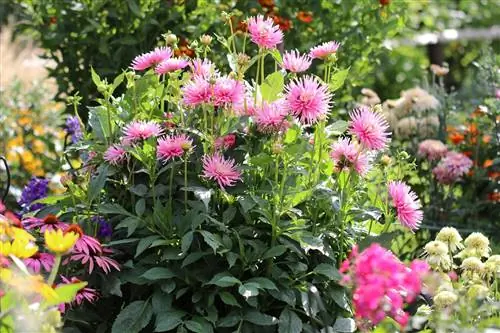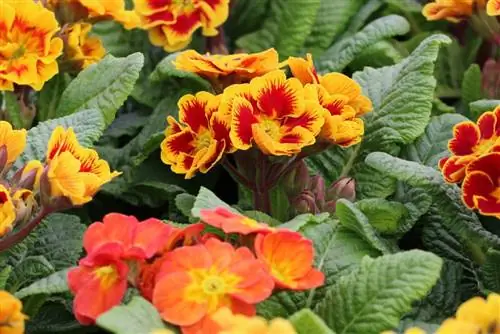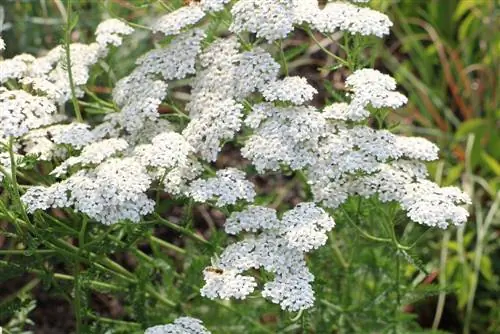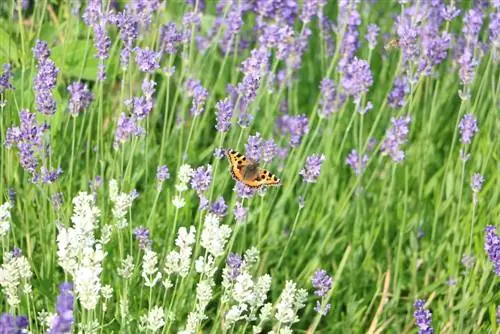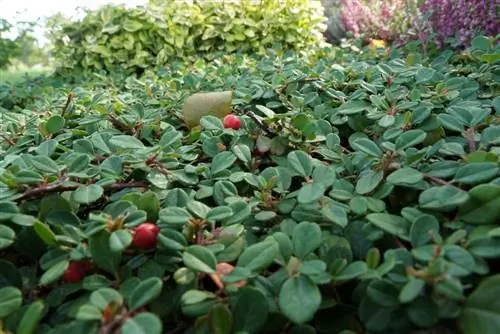- Author admin [email protected].
- Public 2023-12-17 03:39.
- Last modified 2025-06-01 06:48.
Hardly anyone can't be enthusiastic about the beauty of flowers. No matter how dreary and unpleasant the weather or your own mood is - the world looks much friendlier and more beautiful with flowers. For this reason they are an integral part of every garden, no matter how small. They are also often planted in pots and boxes to add a nice touch of color to balconies or terraces.
So that this can happen throughout the year, it is important that blooming flowers are selected for both summer and winter. Some of these flowers are particularly popular. And not just because they have beautiful inflorescences, but because they are easy to care for and can provide joy over a very long period of time.
Flowers for summer
All flowers that bloom between May and the end of September are considered summer flowers. Since this applies to a lot of flowers, they are further divided into:
- the duration of flowering
- the color of the flower
- the preferred location
However, the duration of flowering in particular can be influenced by external influences such as location and weather conditions. It is therefore possible that supposed early summer bloomers still have great inflorescences in late summer. Conversely, in bad weather it can also happen that the inflorescence is significantly shorter than expected.
Species and varieties
The species and varieties listed here are not only ideal for summer, but are also mostly hardy. This means that the tubers and bulbs do not have to be removed from the soil after they have faded. Popular summer flowers include:
- annual dahlias in the colors yellow, orange, red, white, purple or pink
- perennial and evergreen lilies in red, orange and yellow colors
- perennial and evergreen gladioli in a wide range of colors
- perennial bluebells in red and purple
- perennial carnations in red
- perennial begonias in red, orange, white, yellow or pink
- perennial lilies in a wide range of colors
- perennial daisies in white and yellow
- annual sunflowers in yellow
- perennial and hardy roses in a wide range of colors
- perennial tulips and daffodils as well as daffodils, which provide a splash of color in spring
Location
Depending on the choice of flowers, it is important, especially with summer flowers, to take a critical look at the location. There are many flowers that do not want direct sunlight, but rather prefer a semi-shady place. Others can't live without the sun and want to enjoy it all day long. In general, before planting or cutting the bulbs and tubers, the optimal location for the selected flowers must be determined in order to achieve beautiful flowers.
Tip:
Relevant information about the ideal location can be found on the small signs that can be found on the flowers or on the tubers and bulbs when purchasing.
Flowers for winter
Now the cold season is not necessarily known for conjuring up a great sea of flowers. In fact, it is not only difficult, but simply impossible, to get a flower to bloom in the garden in frosty temperatures. If you want the garden to be nice to look at in winter despite everything, you have to choose hardy and evergreen plants and trees.
Alternatives for a beautiful garden
Nevertheless, even in winter, when snow and ice transform the garden into a white winter landscape, you don't have to miss out on a little color. There are some plants that also bloom in the winter months and can provide an interesting splash of color. These plants and trees include:
- the snowball
- the witch hazel
- the snow forsythia
- the honeysuckle
You can add a splash of color to the garden with colorful flowers and green leaves. If you step a little closer, you can even notice a pleasant scent produced by the flowers on one or two of the trees.
Tip:
If you are looking for a slow-growing tree, witch hazel, which is available in Japanese and Chinese versions, is the best choice.
Location
As with flowers in summer, the location of winter trees and plants can be decisive for the effect. Since in the cold winter months the sun and temperatures have less of an impact on the beauty of the plants and trees, the choice of location should focus on practical things such as a good view of the trees and a little protection from wind and weather. These are best placed at the entrance, in front of the window or on the terrace. However, they feel less comfortable in dark, narrow corners or in groups that are too close together.
In order to visually showcase the winter bloomers a little more, it is worth planting a few evergreen plants, shrubs and trees around the location. The boxwood, for example, is particularly suitable here. But the rhododendron or Christmas roses also make a good impression and fit perfectly with the flowering plants. However, care must be taken not to plant too closely so that each individual plant has enough space.
Frequently asked questions
Where is the best location for summer bloomers?
Summer bloomers should always be planted after the sun. Every flower has its own ideas about how much sun it needs. This should also be noted.
Are there perennial flowers for summer?
Yes. A lot of them, actually. Some of them can even remain in the ground after they have faded, as they are also hardy.
Where is the best location for winter bloomers?
When it comes to winter bloomers, it's less about the sun than it is about seeing the flowers well. They should therefore find their place within sight. Also in combination with evergreen plants and trees, which further emphasize the beautiful look.
What you should know about planting garden flowers in brief
If you do it cleverly and combine the right plants together, you can enjoy the splendor and colorfulness of flowers and shrubs in the garden all year round. It is entirely possible to present different types of flowers together in one bed if you know each one's preferences and make your garden a feast for the eyes.
- Before you choose flowers for your garden, you should be informed about the condition of the garden soil. Flowers have different demands on moisture, permeability and nutrient content.
- The location also plays a big role for the flowers: is it sunny, is it partial shade or is it always in shade. After that, you also have to choose the right flowers. There are also annual, biennial and perennial plants.
- While most annual flowers are very easy to care for, roses, for example, which are perennial species, are a lot more demanding. Other species may be perennial but not hardy. These then have to be kept indoors over the winter.
- Some flowers are grown from seeds, others are purchased as young plants and planted in the bed. Some bloom in spring, others in summer or autumn and sometimes they are followed by attractive fruits that brighten up the gray winter with their splendid colors.
- In addition, the growth and ultimate size of the flower is also worth considering. There are both species that grow upwards and species that spread above the ground and therefore require more space. This must be taken into account when planting or sowing.

